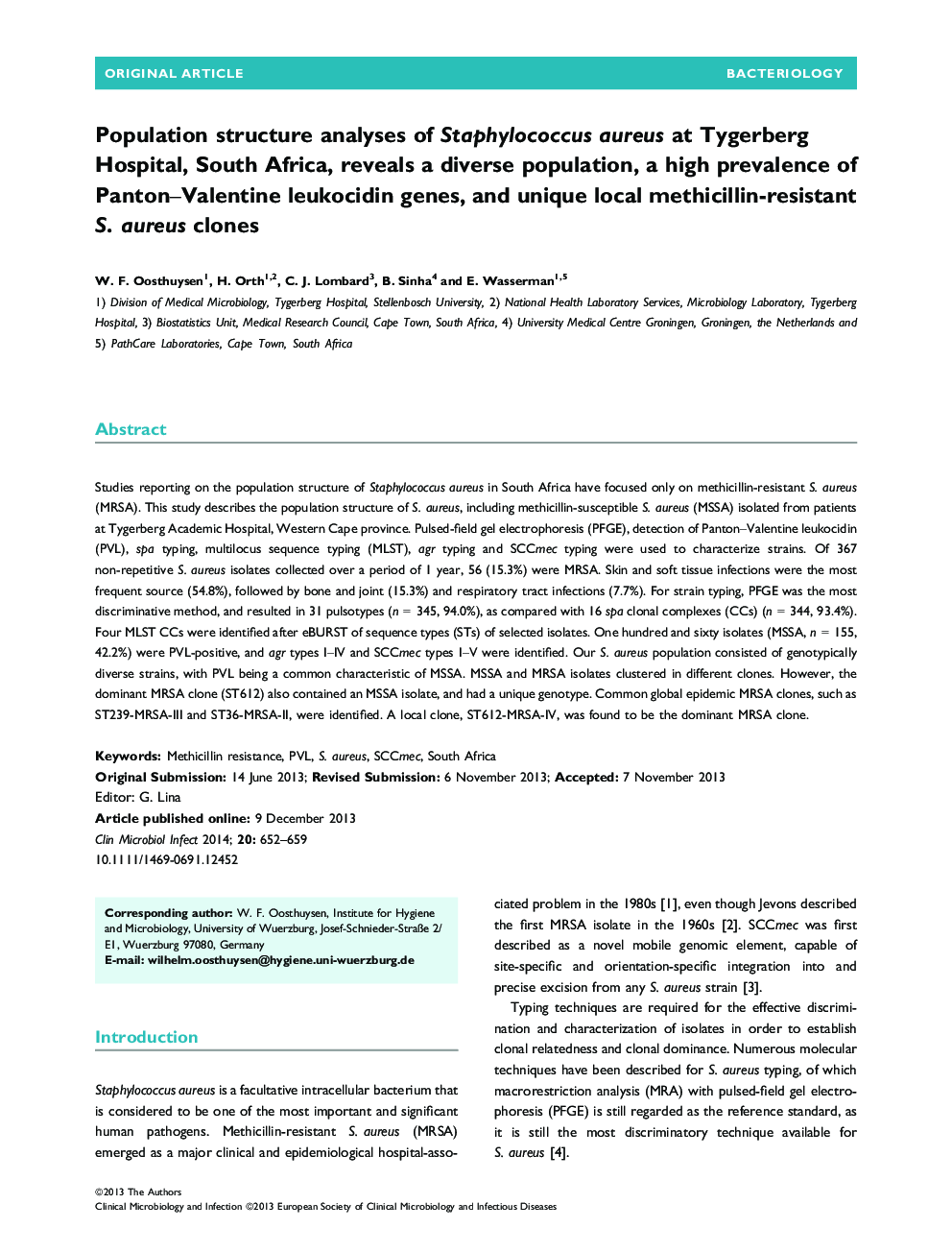| کد مقاله | کد نشریه | سال انتشار | مقاله انگلیسی | نسخه تمام متن |
|---|---|---|---|---|
| 3396522 | 1222171 | 2014 | 8 صفحه PDF | دانلود رایگان |

Studies reporting on the population structure of Staphylococcus aureus in South Africa have focused only on methicillin-resistant S. aureus (MRSA). This study describes the population structure of S. aureus, including methicillin-susceptible S. aureus (MSSA) isolated from patients at Tygerberg Academic Hospital, Western Cape province. Pulsed-field gel electrophoresis (PFGE), detection of Panton–Valentine leukocidin (PVL), spa typing, multilocus sequence typing (MLST), agr typing and SCCmec typing were used to characterize strains. Of 367 non-repetitive S. aureus isolates collected over a period of 1 year, 56 (15.3%) were MRSA. Skin and soft tissue infections were the most frequent source (54.8%), followed by bone and joint (15.3%) and respiratory tract infections (7.7%). For strain typing, PFGE was the most discriminative method, and resulted in 31 pulsotypes (n = 345, 94.0%), as compared with 16 spa clonal complexes (CCs) (n = 344, 93.4%). Four MLST CCs were identified after eBURST of sequence types (STs) of selected isolates. One hundred and sixty isolates (MSSA, n = 155, 42.2%) were PVL-positive, and agr types I–IV and SCCmec types I–V were identified. Our S. aureus population consisted of genotypically diverse strains, with PVL being a common characteristic of MSSA. MSSA and MRSA isolates clustered in different clones. However, the dominant MRSA clone (ST612) also contained an MSSA isolate, and had a unique genotype. Common global epidemic MRSA clones, such as ST239-MRSA-III and ST36-MRSA-II, were identified. A local clone, ST612-MRSA-IV, was found to be the dominant MRSA clone.
Journal: Clinical Microbiology and Infection - Volume 20, Issue 7, July 2014, Pages 652–659